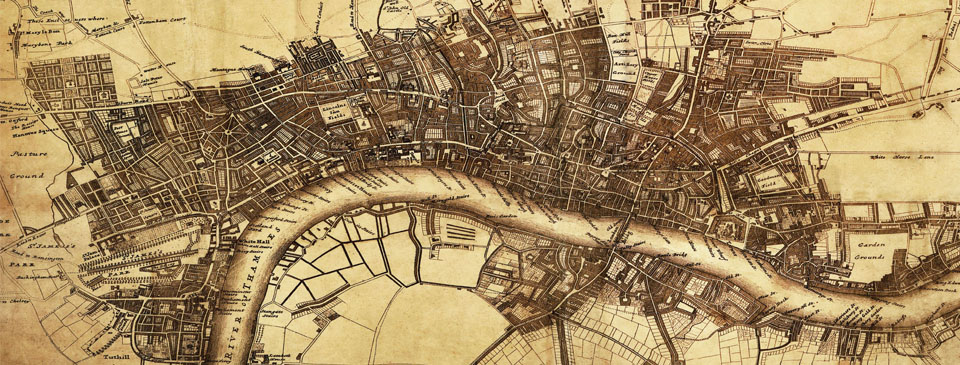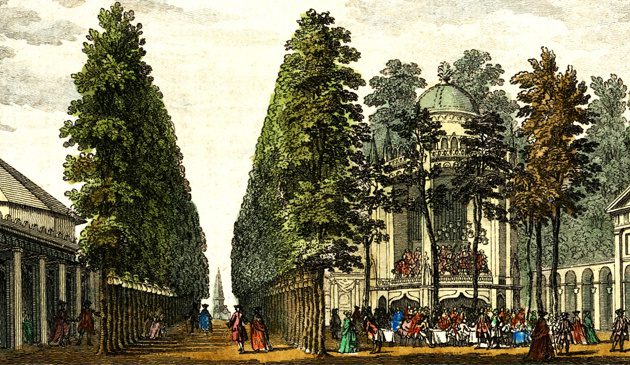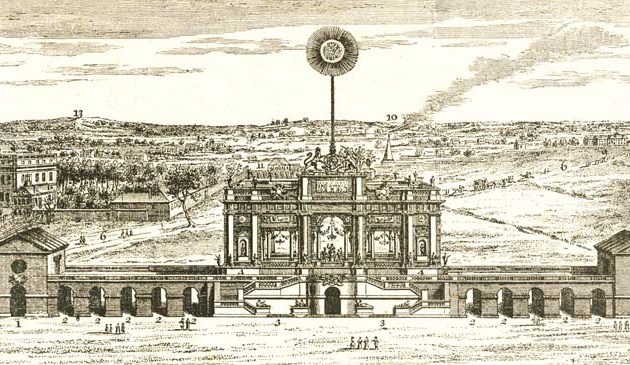In brief – Early-Georgian London

By the 18th century London had expanded beyond its walls, linking up with what in the past had been the separate town of Westminster. This detail of the 1720 map by John Strype shows the conurbation stretching from Westminster and St. James’s in the west to Whitechapel, Wapping and Shadwell in the east.
Until the middle of the 18th century it was necessary to pass through London in order to travel from one side to the other, other than by boat on the river. Making a journey across the capital’s congested streets from, say, Kensington to Whitechapel, was a time-consuming affair. Petitions were made to Parliament to create a by-pass to the north of London and an Act was passed in 1756 to create the ‘New Road’ from Paddington to the Angel Inn at Islington. This created what are today Marylebone Road, Euston Road and Pentonville Road. In 1761 a Charles Dingley obtained permission to create a toll road from the Angel Inn to Old Street, linking the New Road to the western side of the City and that section came to be called City Road.
Each Lord Mayor used the hall of whichever Livery Company he belonged as his official residence for entertaining until the mis-18th century. It was an inconvenient arrangement, so the City Corporation arranged for the palatial new official residence – Mansion House – to be constructed on the relatively small site in the centre of the City that had been used for the Stocks Market. The building was designed by George Dance (the elder) and completed in 1752.
The South Sea Company was formed during the time of Queen Anne to trade with South and Central America. The government of George I planned that it would take on the country’s national debt in exchange for bonds in the business. In order to gain political backing the company’s stock was sold to politicians and members of the royal court at artificially low prices. Paper transactions gave the impression that it was making large profits and the price of shares rapidly began to rise. As people saw others making paper profits they wanted to join in until the stock had reached massively over-inflated values, an event known as the ‘South Sea Bubble’. But the value suddenly crashed. The lucky few had sold at vast profits but thousands of people lost all their investments.
London had become a city of extremes by the 18th century. At one end of the social scale were aristocrats and some merchants who were extremely rich; at the other were thousands who lived in extreme poverty. It was a place of both respectability and debauchery. Those without existing skills or the right connections took what work they could get or entered into a life of crime. Tens of thousands of poor and unskilled people lived in squalid areas known as rookeries, the most notorious of which was at St. Giles.
The child mortality rate was high, with seventy four percent of children dying before they reached the age of five. Many of those who survived were abandoned to live on the streets. When Captain Thomas Coram, a retired sailor and shipbuilder, returned from America in 1722 he was horrified by the poverty in London. Together with others such as the artist William Hogarth and the composer Handel he raised funds for an orphanage. After petitioning George II he was granted a Royal Charter to open the Foundling Hospital, England’s first home for abandoned children, which opened in 1739 to the north of Bloomsbury.
Gin was more readily available than fresh drinking water. Increasing numbers of people had become addicted and this was in large part responsible for the city’s social problems: many poor and destitute; growing levels of crime and prostitution; and lower birth rates and higher child mortality.


